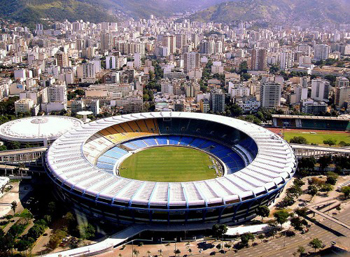Huge Soccer Stadium Going Solar
 Brazil’s Estadio do Maracana seats over 82,000 and has hosted a FIFA World Cup where nearly 200,000 attended. The stadium will host the 2014 FIFA World Cup final as well. Seating capacity for the 2014 FIFA events should be 85,000. Besides soccer matches, it has been the site of many other events, such as concerts and the 2007 Pan American games. Soon it will also be known for generating solar power.
Brazil’s Estadio do Maracana seats over 82,000 and has hosted a FIFA World Cup where nearly 200,000 attended. The stadium will host the 2014 FIFA World Cup final as well. Seating capacity for the 2014 FIFA events should be 85,000. Besides soccer matches, it has been the site of many other events, such as concerts and the 2007 Pan American games. Soon it will also be known for generating solar power.Yingli Solar, along with Light ESCO and the state of Rio de Janeiro, will collaborate on a large solar installation there. Over 1,500 solar panels will be fitted to a large metal ring encircling the stadium. YGE 245 Series modules will be used for the project. These modules use polycrystalline cells to generate 245 watts each.
“We believe we’re working with the best partners possible on this project, and we will be offering the State of Rio de Janeiro significant value for many years to come,” said Flavia Silveira, Energy Commercialization Manager, Light ESCO.
The stadium is one of the most well known in Brazil, so using it as a showcase for solar technology sends a signal to the nation there is a commitment to renewable energy and sustainability. Given the very large audiences and media attention, the new solar installation should generate considerable buzz on the topic of solar power. Other soccer venues used in the FIFA 2014 matches will also get new solar panels, as part of an effort to promote sustainability by pairing it with the world’s most popular sport.
Brazil has recently allowed residential and commercial sites to install up to one megawatt of solar power and begin selling the power back to the grid using net metering. For some time, it is expected smaller installations may be the more common trend, until technology prices drop further. None of this means larger plants are not being built or encouraged. Their national government just offered an 80 percent tax break over the first ten years of operation to any new solar power plant up to 30 MW.
You can return to the main Market News page, or press the Back button on your browser.

